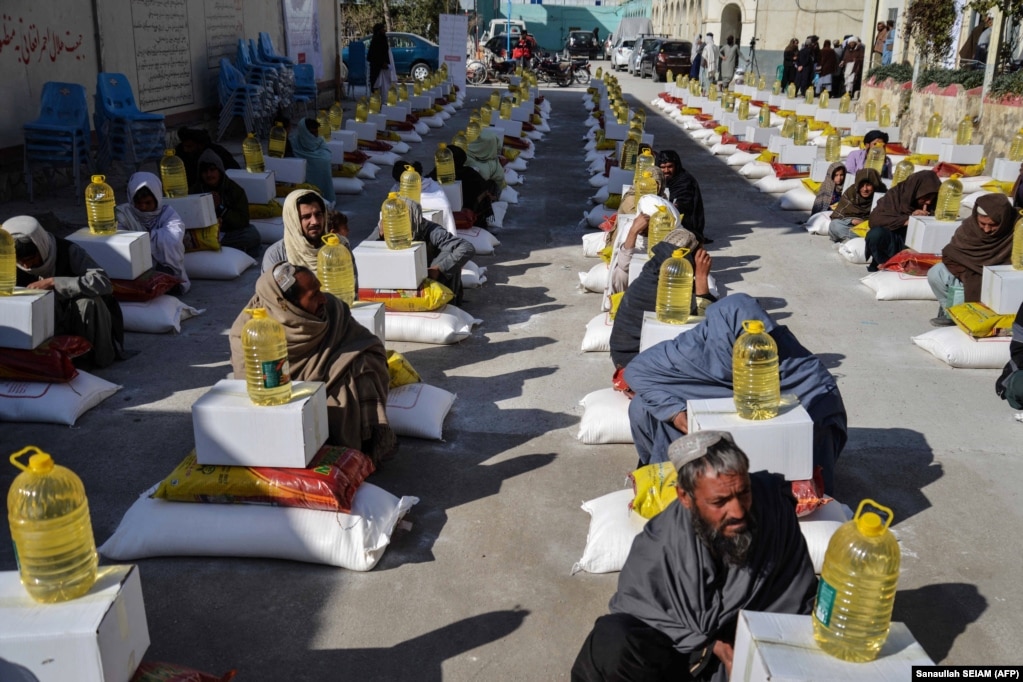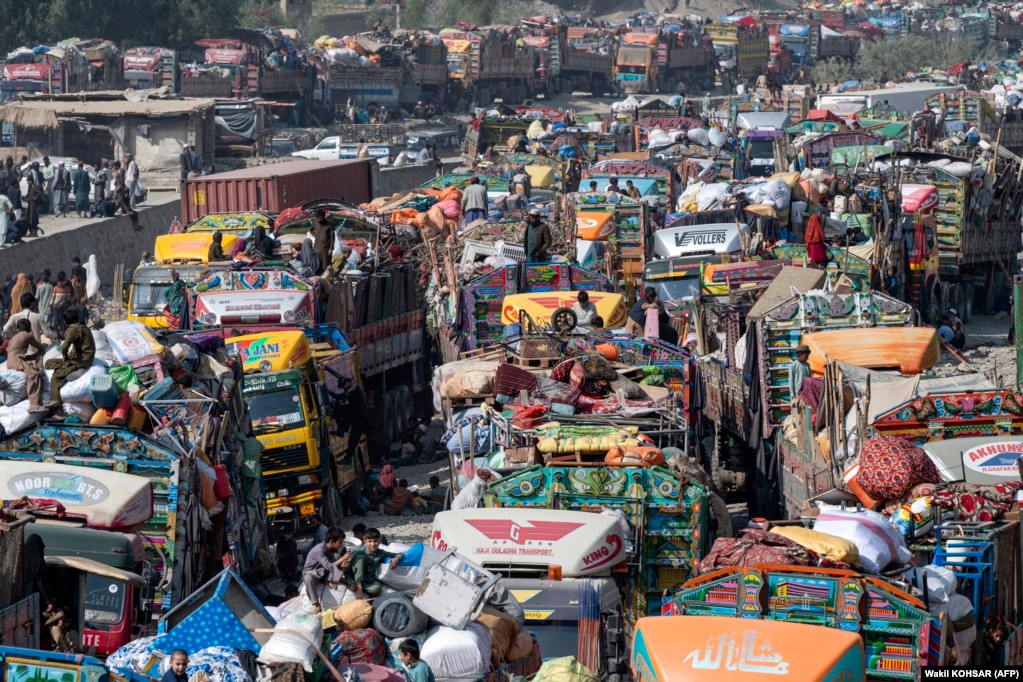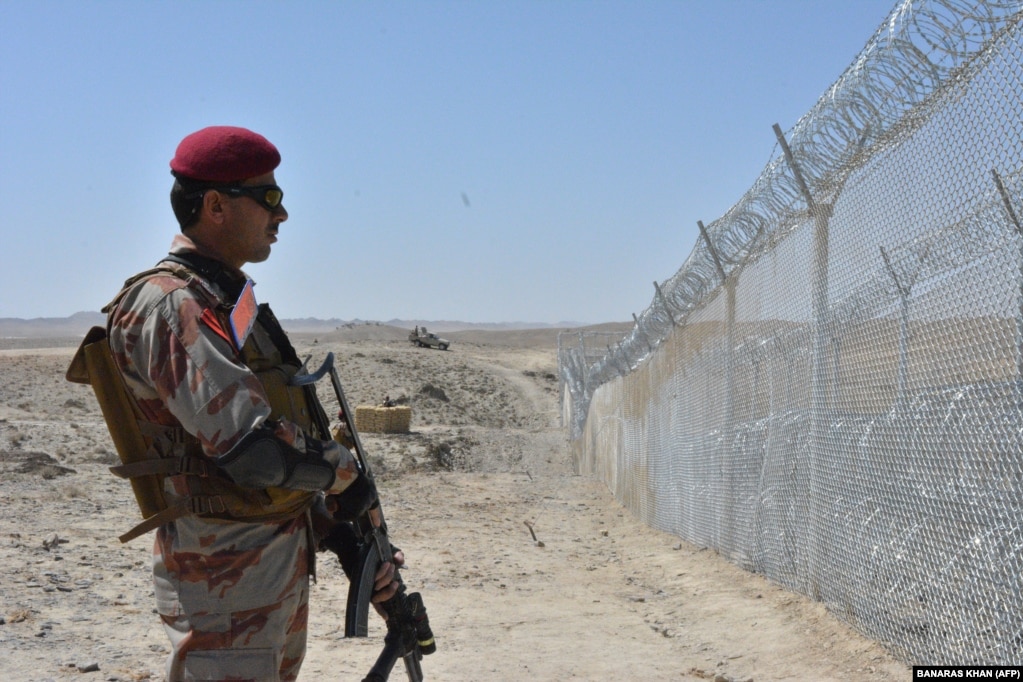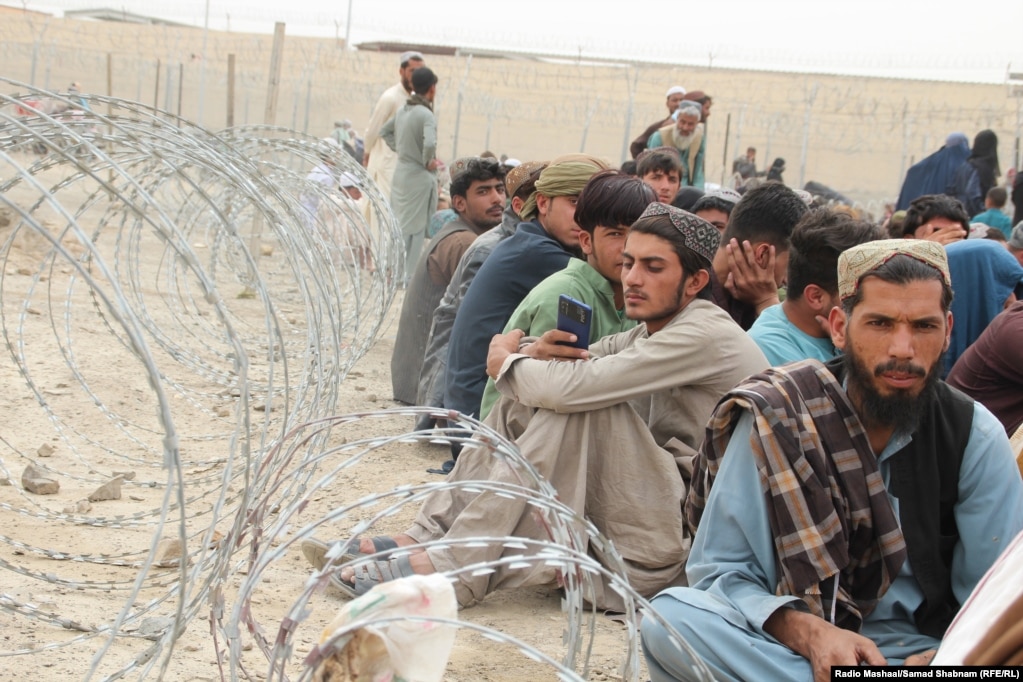
Afghans are being pushed back, fenced out, and left to fend for themselves in the face of Taliban persecution and widespread hunger.
Hundreds of thousands of undocumented Afghans have been kicked out of neighboring countries and forcibly returned to Afghanistan in recent months. Millions more are slated to join them, complicating the already daunting humanitarian effort to stave off a famine.
Underscoring that Afghans are not welcome, neighboring states are rolling out the barbed wire in an attempt to keep them out.
Returnee Overload
Over the course of a year, a total of 1.5 million Afghans have been forcibly returned to Afghanistan by various countries, the Taliban said earlier this month.
Most, according to migration officials, were sent back by Pakistan, Iran, and Turkey — for decades destinations for Afghan migrant workers as well as refugees looking to escape war and poverty. Others have been sent back from Tajikistan and Uzbekistan.
That number could more than double if Iran and Pakistan fully carry out their goals of deporting all undocumented Afghans, including asylum-seekers who face persecution under the Taliban and some who have not lived in their home country for decades or were born abroad.
Pakistan was initially accommodating to Afghans fleeing Taliban rule, serving as a temporary destination for many as they sought asylum in a third country.
But since October 2023, when Islamabad announced its plans to expel more than 1.7 million “undocumented foreigners,” more than a half million Afghans have been forced to leave Pakistan, Abdulmatallab Haqqani, spokesman for the Taliban’s Refugees and Repatriations Ministry, said this week.
Some of the new arrivals are now trying to resettle in a homeland they have never stepped foot in, and most are being held in temporary tent camps set up along Afghanistan’s eastern border with Pakistan, where aid groups are struggling to provide them with emergency relief.

‘I Feel Like An Alien’: Afghan Muslims Decry India’s New Citizenship Law
More than half of Afghanistan’s population of around 40 million faces a food security crisis that is approaching the level of a famine, according to aid and rights groups.
According to the UN’s World Food Program, the situation is contributing to “a humanitarian crisis of incredible proportions” that has “grown even more complex and severe since the Taliban took control” in August 2021. The UN body warns that Afghanistan is on the brink of economic collapse, with the currency struggling and food prices on the rise.
The vast majority of the returnees aim to return to their provinces of origin, according to the International Organization for Migration Afghanistan, but many have no homes or livelihoods to return to.
The new arrivals have been welcomed in Afghanistan, UN Refugee Agency (UNHCR) senior public information officer Caroline Gluck told RFE/RL in written comments, but “there are limited capacities to offer them the support they need.”
“The arrival of around a half million Afghans from Pakistan is putting a huge strain on already limited services — from health to shelter, work opportunities, and schools,” Gluck said.
“Many have arrived, having spent all their life in Pakistan and never having set foot in Afghanistan,” Gluck added, noting that more than 23 million Afghans are in need of humanitarian aid.
Like many returnees, Abdul Basit, a migrant who recently left Pakistan and moved to Afghanistan’s eastern Nangarhar Province, has experienced difficulties settling back in.
Basit told RFE/RL’s Radio Azadi that there is no work and he and other deportees spend much of their time bouncing around from government office to government office.

Hunger, Poverty Overshadow Ramadan In Afghanistan
The situation now promises to get even worse, with a second phase set to begin on April 15 to expel Afghan citizens from Pakistan, meaning more than 1 million Afghans could be potentially deported.
To the west, Iran is also engaged in a concerted effort to push out Afghans.
According to Iranian officials, more than 1 million undocumented Afghans have been deported in the past year. That number, too, could more than double, with Tehran saying it intends to expel half of the 5 million Afghans it estimates live in Iran.
In the meantime, Iran has taken steps to make Afghans’ lives difficult on its territory, with migrants and refugees barred from living in, traveling to, or seeking employment in more than half of Iran’s 31 provinces.
Amid rising resentment against Afghan migrant workers whom some Iranians accuse of stealing their jobs, parliamentary committees and officials have also discussed plans that would introduce strict punishments for renting homes or hiring undocumented foreigners.
Heydayatullah, an Afghan laborer who gave only his first name to Radio Azadi, said he was recently deported from Iran after spending only 20 days in the country.
He said that now that he is back in Afghanistan, he is unemployed and has no way of supporting his family of six.
Nasir Ahmad, a 30-year-old who was deported from Iran and has tried to settle in the northern Afghan city of Mazar-e Sharif, said “there is no work in Afghanistan” and that he had depended on traveling to Iran to support his wife and children. Now, he says, he is ready to work for a pittance if only he could find employment.
Fenced Out
From all sides, Afghanistan’s neighbors are taking steps to prevent Afghans from entering their territory, a situation that has led to tensions and occasional clashes.
The efforts are far-reaching, including Tajikistan calling on fellow members of the Shanghai Cooperation Organization to establish a “security belt” along the Afghan border to combat drug trafficking, and Turkey’s construction of a 170-kilometer wall along its border with Iran that is widely seen as intended to keep Afghan migrants out.
But most of the work is being done along Afghanistan’s borders with Pakistan and Iran.
In April 2023, Pakistan announced it was “98 percent” done installing fencing along its around 2,600-kilometer border with Afghanistan. Ahmed Sharif, the spokesman for the Pakistani military’s media department, said the barrier was intended to prevent “terrorists” from crossing into Pakistani territory.
But the fence also reinforces Islamabad’s anti-migrant position, observers suggest, and has posed difficulties for traders on both sides.
Running along the contentious Durand Line border that the Taliban does not recognize as legitimate, the fence has also left Taliban officials bristling. Having previously boasted about destroying the barbed wire fencing, the Taliban has said it will not allow the fence to be completed.
Tensions along the border have risen considerably in recent days, with Islamabad this week launching retaliatory air strikes on armed groups it says have carried out militant attacks in Pakistan and are hiding out in Afghanistan.
The Taliban, in turn, said its forces had fired at Pakistani positions in retaliation on March 17.

The Azadi Briefing: Taliban’s Investment In Iranian Port Signals Shift Away From Pakistan
Iran, meanwhile, has launched its own initiative to block the paths of Afghans across its 920-kilometer border with Afghanistan.
Iranian Interior Minister Ahmad Vahidi said in January that the project was a “complete plan” that went beyond the erection of a wall along a porous 74-kilometer stretch of the border, stressing it is a top priority to seal gaps in the border that are being “misused.”
Observers note the initiative comes after Iran accused extremist groups in Afghanistan of attacks on Iranian territory as well as following clashes between Iranian and Taliban border forces that reportedly led the Taliban to reinforce the border.
Aziz Maaraj, a former Afghan diplomat in Iran, told Radio Azadi that “Iran is installing cameras and barbed wire” to prevent smuggling and the entrance of illegal migrants, as well as to protect itself against future clashes and possible militant attacks.
Fereshta Abbasi, a researcher in the Asia division at Human Rights Watch, told RFE/RL that “definitely, Iran and Pakistan are trying to send the message to Afghans that they are not welcome.”
Contributing to the problem is that the international community has been slow in living up to commitments to resettle Afghan asylum seekers and refugees who fled after the Taliban seized power. That has left thousands of Afghans who did find temporary refuge in neighboring countries as they awaited processing at the risk of having to return to the persecution and insecurity they fled.
“Some of these people who are now being forced to leave Pakistan and Iran are the ones whose lives are not safe inside Afghanistan,” Abbasi said.
“The Taliban have arbitrarily detained journalists, human rights activists, former government employees, and former security officers. These people have been tortured. In some cases, they have been forced to disappear and killed,” she added.
Outside countries have also been slow to deliver money, leaving the coffers of the UN’s 2024 humanitarian response plan at just 3 percent of expected levels, coming after the 2023 plan was only funded by half, according to Abbasi.
“These governments are not living up to their commitments,” Abassi said, adding that Afghans who worked with the previous Western-backed government or alongside Western forces are at particular risk. “They need to be reminded of the fact that they are leaving those Afghans behind who have stood by them.”





